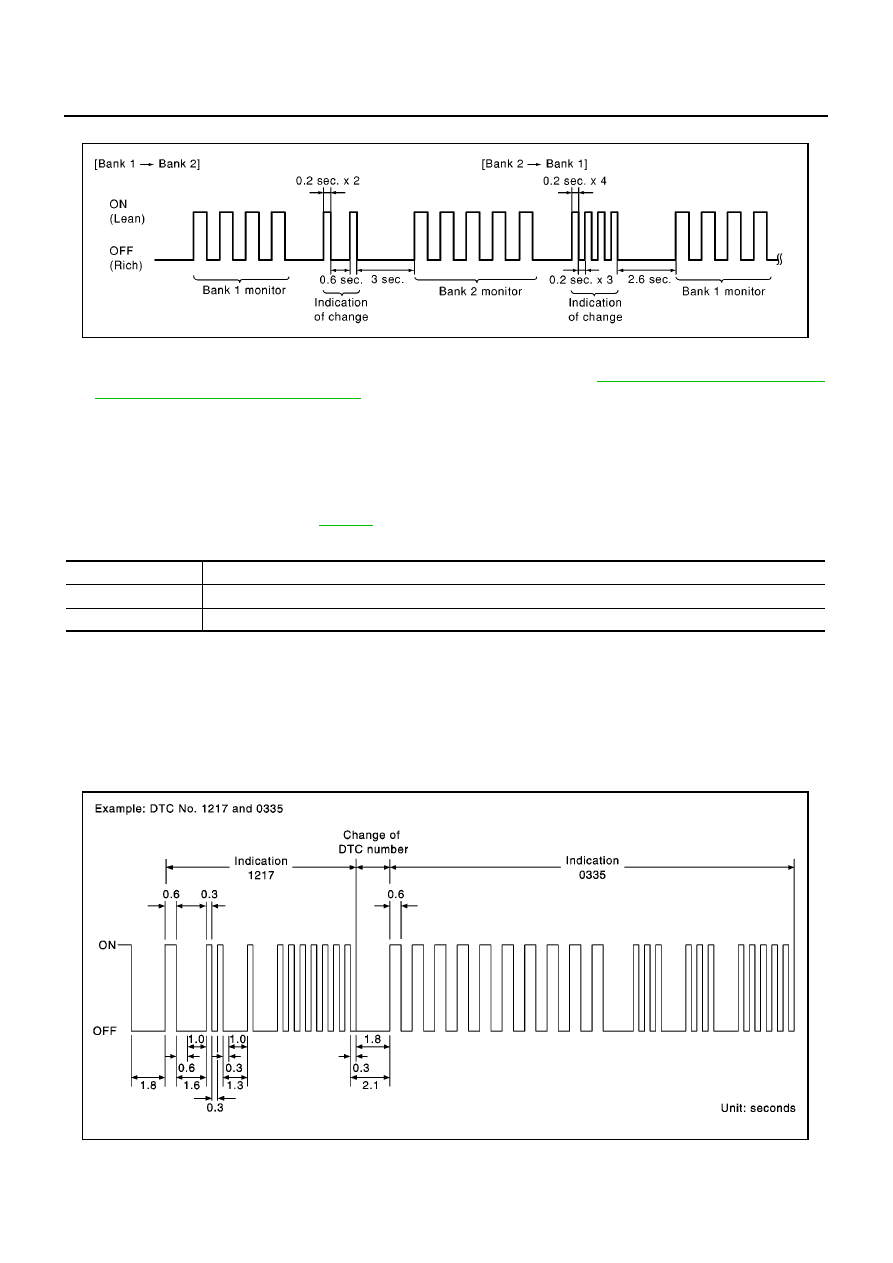Nissan Almera Tino V10. Manual - part 440

EC-586
[QG (WITHOUT EURO-OBD)]
ON BOARD DIAGNOSTIC (OBD) SYSTEM
2.
Make sure that monitoring sensor has changed by MI blinking as follows.
How to Erase Diagnostic Test Mode II (Self-diagnostic Results)
1.
Set ECM in Diagnostic Test Mode II (Self-diagnostic results). Refer to
EC-585, "How to Set Diagnostic
Test Mode II (Self-diagnostic Results)"
.
2.
Fully depress the accelerator pedal and keep it for more than 10 seconds.
The emission-related diagnostic information has been erased from the backup memory in the ECM.
3.
Fully release the accelerator pedal, and confirm the DTC 0000 is displayed.
DIAGNOSTIC TEST MODE I — BULB CHECK
In this mode, the MI on the instrument panel should stay ON. If it remains OFF, check the bulb. Refer to
“WARNING LAMPS”, EL-115 or see
.
DIAGNOSTIC TEST MODE I — MALFUNCTION WARNING
●
These DTC numbers are clarified in Diagnostic Test Mode II (SELF-DIAGNOSTIC RESULTS)
DIAGNOSTIC TEST MODE II — SELF-DIAGNOSTIC RESULTS
In this mode, the DTC and 1st trip DTC are indicated by the number of blinks of the MI as shown below.
The DTC and 1st trip DTC are displayed at the same time. If the MI does not illuminate in diagnostic test mode
I (Malfunction warning), all displayed items are 1st trip DTCs. If only one code is displayed when the MI illumi-
nates in diagnostic test mode II (SELF-DIAGNOSTIC RESULTS), it is a DTC; if two or more codes are dis-
played, they may be either DTCs or 1st trip DTCs. DTC No. is same as that of 1st trip DTC. These unidentified
codes can be identified by using the CONSULT-II. A DTC will be used as an example for how to read a code.
PBIB0093E
MI
Condition
ON
When the malfunction is detected.
OFF
No malfunction.
PBIA3905E